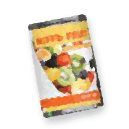This article is adapted from AQ’s print issue on piracy in Latin America
From toys to pills, pirated and counterfeited goods are everywhere. The total value of fake products around the world will surpass $2 trillion by 2022, according to one estimate. Products of all kinds are sold through this tax-free business model, with no regulatory agency to guarantee quality or safety. The following examples provide a glimpse of the problem in Latin America.
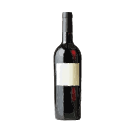 Alcohol
Alcohol
Roughly a third of alcohol in the Dominican Republic is illicit, one of the highest rates in Latin America. This includes improperly labeled and untaxed beverages, as well as homemade, bootlegged and adulterated alcohol. In 2017, 12 people died and dozens more were hospitalized in a town near the Haitian border after drinking a homemade rum that was cut with methanol.
Cost: Illicit alcohol cost the Dominican Republic some $262 million in 2016, according to a report by the International Alliance for Responsible Drinking.
 Toys
Toys
Mexico is a major market for counterfeit toys, with a 2015 study finding that one in every six toys for sale is pirated. Knockoffs produced in-country and imported from Asia can pose health risks to children. In 2018, raids in one Mexico City neighborhood seized over 9,000 counterfeit toys. Though most illicit toys marketed to children are made to resemble their branded counterparts, some Mexico-made bootlegs have become sought after among novelty collectors worldwide, with prices at times even surpassing the value of the genuine product.
Cost: The pirated toy industry costs Mexico nearly $100 million each year, Bloomberg estimated.
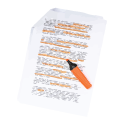 Books and Academic Texts
Books and Academic Texts
Many small vendors in Santiago and Valparaíso have become popular distributors of illegally copied fiction, nonfiction and academic texts. In fact, Chile’s cities accounted for the region’s second-highest volume of illegally downloaded academic articles on the paywall-thwarting database Sci-Hub, which provides pirated papers to university students in the name of open access. Between January and November 2017, books comprised 40 percent of the products seized in Chile for violating intellectual property law.
Cost: Chilean police seized approximately $6.1 million in pirated books between 2014 and 2016, not counting the large volumes of pirated texts available through photocopy or online for download.
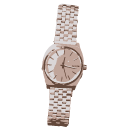 Luxury Goods
Luxury Goods
One of U.S. Trade Representative’s “notorious markets,” Paraguay’s Ciudad del Este is a hub for knockoff designer merchandise destined for neighboring Brazil and Argentina. Counterfeit Rolex watches, Louis Vuitton bags and other luxury brands are purchased in bulk or smuggled for redistribution.
Cost: Paraguay’s intellectual property enforcement agency has seized $300 million in goods in since 2013, mostly clothing and accessories.
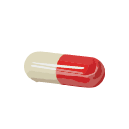 Medicine
Medicine
In Colombia, dangerous counterfeit pharmaceuticals often take on the guise of discounted treatments for cancer, HIV or erectile dysfunction, with fake labels or falsified expiration dates. Some adulterated products are available through local pharmacies and online, posing health risks to unsuspecting consumers and discount treatment seekers alike.
Cost: The Colombian public health agency estimates that 10 percent of the products in Colombia’s $4 billion pharmaceutical market are adulterated or falsified.
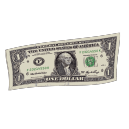 Currency
Currency
Since the first fake U.S. dollar was detected in 2003, counterfeiting in Peru has only grown, earning the U.S. Secret Service designation of global leader. On the outskirts of Lima, $180 can buy $2,000 in fake greenbacks.
Cost: Estimates vary. In a 2016 operation, U.S. agents seized a record $30 million in counterfeit bills.
Food
While limited access to food has driven many Venezuelans to leave the country, a particularly dubious form of counterfeiting has plagued those who stay. Multiple media investigations have found that President Nicolás Maduro’s CLAP program of subsidized food packages has hawked spoiled or questionable products to a starving population, including fake powdered milk from Mexico.
Cost: Venezuela’s Congress found that the Maduro government overpaid $206 million to supply the CLAP program in the first half of 2017.
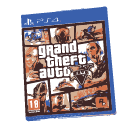 Software and Video Games
Software and Video Games
Nearly half of software in Brazil is unlicensed, according to the Business Software Alliance, and the illegal market value is nearly equivalent to the legal market. Meanwhile, a 2016 survey ranked Brazil second in global video gaming piracy. The practice has its roots in the military dictatorship, when restrictions on imports encouraged the bootlegging of popular foreign games.
Cost: In 2016, the illegal software and video games markets were worth nearly $1.6 billion and $211 million respectively, according to one Brazilian anti-piracy group.
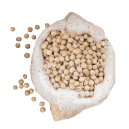 Seeds
Seeds
Argentina, the world’s third-biggest exporter of soy and corn, is a battleground for one controversial categorization of piracy that can occur when farmers, knowingly or unknowingly, plant genetically modified seeds. A 1973 law had allowed Argentine farmers to replant genetically modified seeds, rather than buying new seeds as companies like Monsanto require. Monsanto threatened to leave the Argentine market, and farmers struck a deal to pay royalties as part of a proposed reform to the seed law.
Cost: The new law would transfer some $600 million in royalties to Bayer-Monsanto over the next five years, according to a farmers group.
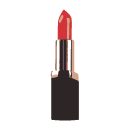 Cosmetics
Cosmetics
Piracy within Chile’s beauty and personal care industry has kept apace with the industry’s growth. In 2018, Chilean customs seized 144,000 units of undeclared beauty products valued at $2 million. Authorities cited concerns that the products had not undergone sanitary inspections and could contain harmful chemicals. Industry tests have shown counterfeit products containing mercury and even human waste.
Cost: Euromonitor estimated that $400 million in counterfeit beauty and personal hygiene products entered Chile’s cosmetics market in 2014.
—
Miller is the production editor at AQ



